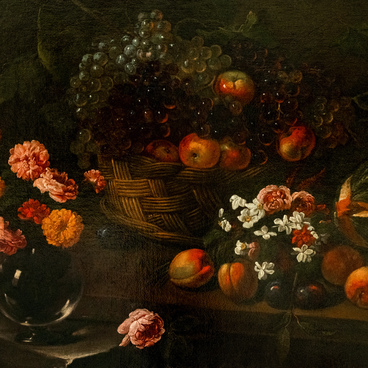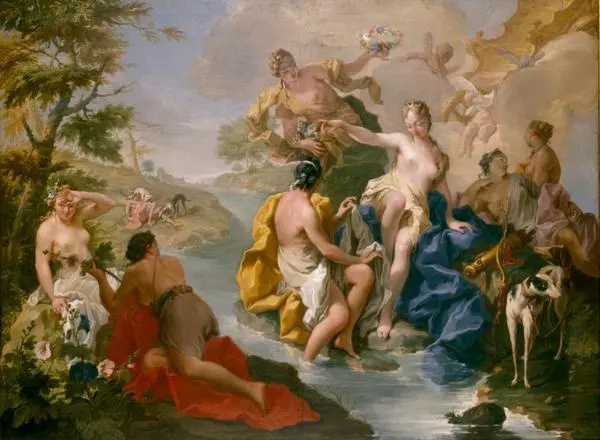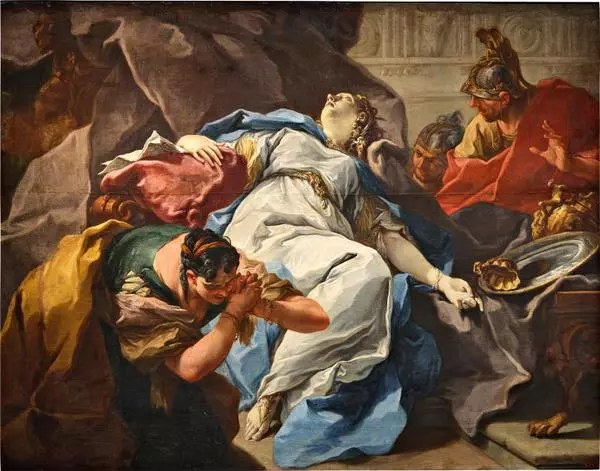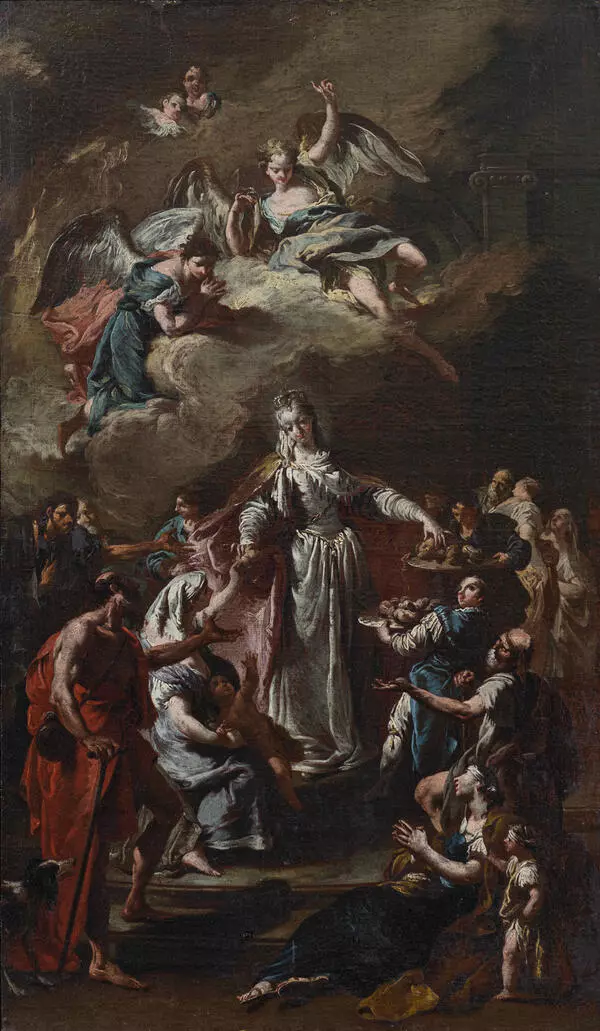Artists of the turn of the 18th centuries used the technique of allegory, appealing not just to emotions but to the level of education of a viewer. Giovanni Battista Pittoni’s work “Kronos Discovers the Truth” from the museum’s collection is an example of such a painting. The painting harbors an allegorical subtext, “In the pursuit of truth, time and knowledge are essential.” The winged old man and the hourglass in cherub’s hands symbolize time (Kronos), the truth is represented in the image of a woman, while the open books signify knowledge. The graceful figure of the reclining Truth is distinguished by a graceful pose, which is typical of many saints and mythological characters depicted in the artist’s works. The female figure in the painting is exquisite, subtle, even mannered, her body appearing porcelain-like and glowing from within. Delicate transparent strokes highlight rosy tones on her cheeks, fingertips, and knees. All these features are reminiscent of the artistic Rococo era, yet its airiness and lightness are missing here.
The painting is executed in the Baroque style with its inherent heaviness, especially noticeable in such details as the drapery in the hands of old Kronos, his large wings, and the open folios. The entire right side of the composition is occupied by chubby cherubs, one of whom holds an hourglass — a symbol of the inexorable passage of time. Painted between 1715 and 1725, the artwork represents the early creative period of the Venetian artist, when he was influenced by the art of Giovanni Piazzetta, Giovanni Tiepolo and Sebastiano Ricci.
Giovanni Battista Pittoni, the foremost master of
Italian Baroque and the last prominent representative of the Venetian school,
painted religious and mythological subjects. He studied under his uncle
Francesco Pittoni, and was influenced by the artists Antonio Balestra and
Sebastiano Ricci. Pittoni traveled little and spent most of his life in Venice.
He was one of the founders of the Gallery of the Academy of Painting and
Sculpture of Venice and in 1758 became its president, succeeding Tiepolo in
this post. Pittoni was a well-known and sought-after artist at European royal
courts. Pittoni’s works were favored by customers, and he often replicated
them, thus many of them exist in several versions. Pittoni was celebrated for
achieving refinement and completeness in composition.






